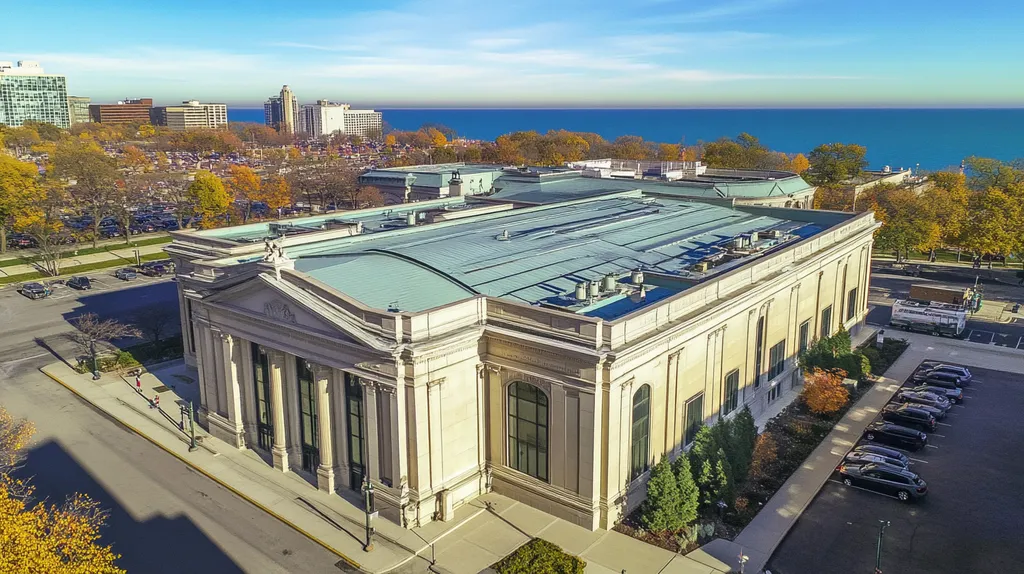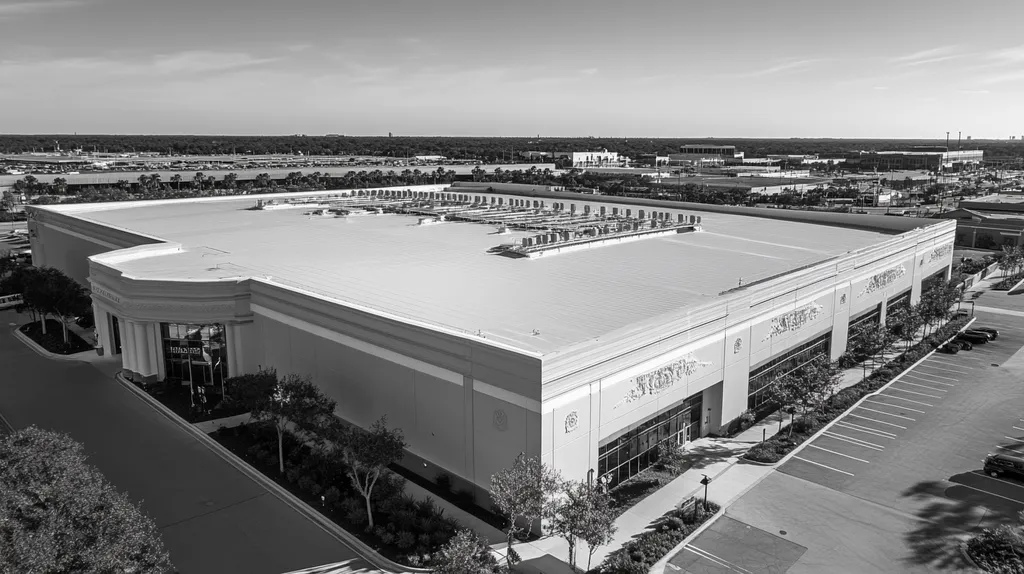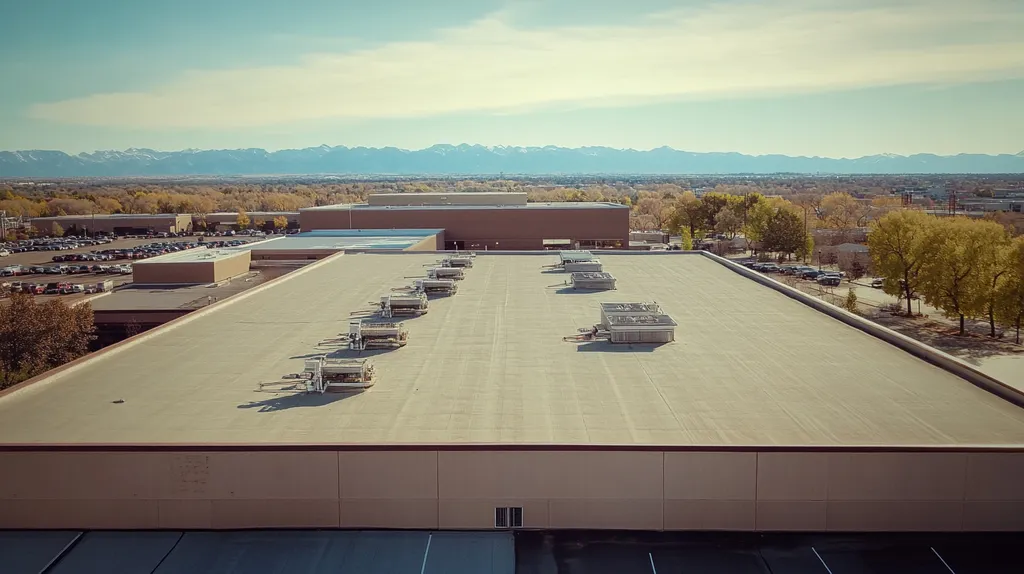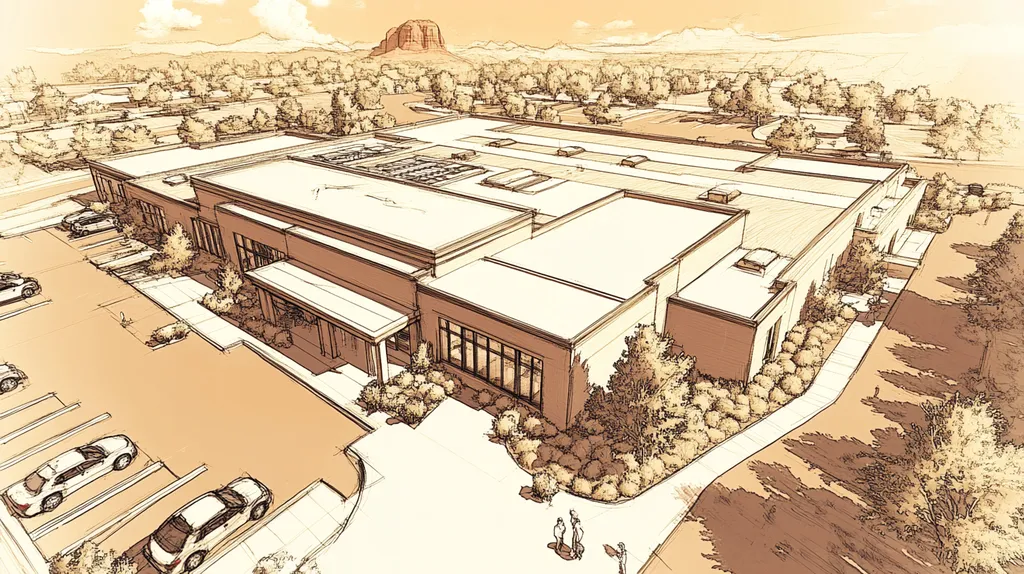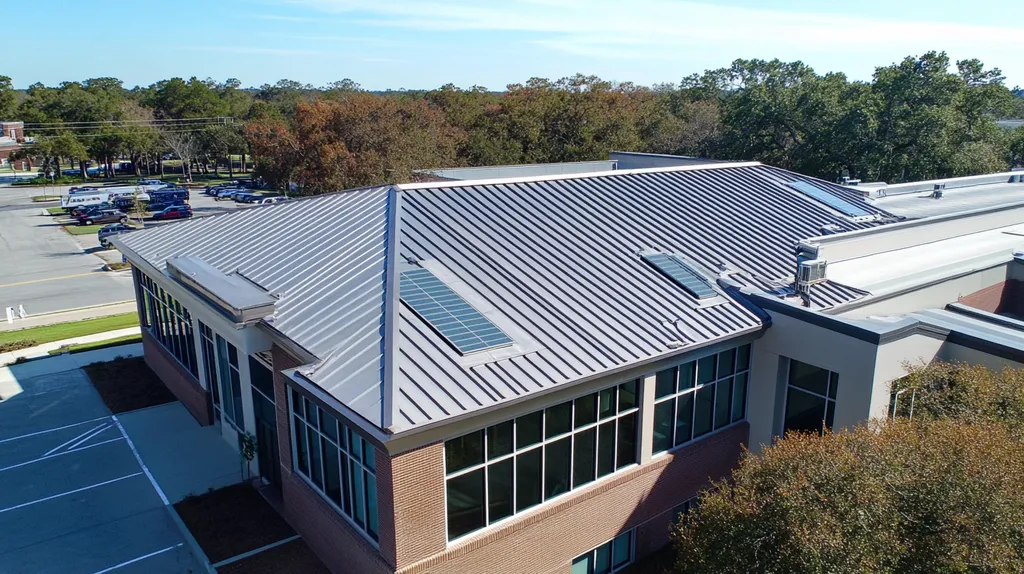Welcome to today’s Battle Royale featuring two roofing heavyweights: “Silicone Roof Coatings” in the east corner versus “Polyurethane Roof Coatings” in the west!
Tonight’s showdown pits these contenders against each other across six punishing rounds designed to test every aspect of their performance for Commercial Roof Coatings Repair.
At stake? Millions in potential costs, decades of building protection, and the critical performance demands of modern commercial and industrial facilities.
Our professional judging panel will evaluate each round on technical merit, real-world performance, and value delivery. After all six rounds, we’ll declare our ultimate champion.
Ladies and gentlemen, facility managers and building owners… it’s time to rumble!
ROUND 1: INITIAL COSTS & INSTALLATION
When faced with commercial roof coating decisions, property managers must carefully weigh multiple cost factors that impact both immediate budgets and long-term facility operations. A poorly chosen coating system can lead to premature failure, causing extensive damage and unnecessary expenses that could have been avoided with proper initial selection.
Material Expenses
Material costs represent a significant portion of any commercial roof coating project. Silicone coatings typically command premium pricing, ranging from $1.75 to $3.50 per square foot for high-quality materials.
The Henry 887 Tropi-Cool 100% Silicone White Roof Coating exemplifies premium silicone solutions, offering superior UV reflection and permanent ponding water resistance that maintain effectiveness throughout the coating’s lifecycle. (source: Henry Company)
Polyurethane coatings generally cost less initially, with prices between $1.25 and $2.75 per square foot. However, their shorter lifespan often necessitates more frequent reapplication.
When considering total lifecycle costs, silicone’s durability and longevity earn it an “ADVANTAGE” in material expenses, despite higher upfront costs.
Installation Complexity
Installation procedures directly impact project success and long-term performance. Silicone coatings offer straightforward application with minimal surface preparation requirements and single-coat coverage in many cases.
These coatings can be applied in a wider range of temperature and humidity conditions, reducing weather-related delays. Their forgiving nature also helps minimize application errors.
Polyurethane systems demand strict environmental controls and often require multiple coats with specific cure times between applications. Their complexity increases labor costs and the potential for installation errors.
The simpler application process of silicone coatings provides a clear “ADVANTAGE” in installation complexity.
Project Timeline
Time efficiency in coating projects directly affects facility operations and bottom-line costs. Silicone coating installations typically complete in half the time of comparable polyurethane projects due to simpler preparation and single-coat coverage.
Quick-curing silicone formulations allow for same-day rain resistance, minimizing weather-related delays. This accelerated timeline helps maintain business continuity.
Polyurethane applications require longer cure times between coats and stricter climate controls, extending project duration. These delays can significantly impact facility operations.
The faster completion times and weather resistance of silicone coatings deliver another “ADVANTAGE” in project timeline considerations.
ROUND 1 WINNER: SILICONE ROOF COATINGS
ROUND 2: DURABILITY & LIFESPAN
Commercial roof coatings represent a critical line of defense against environmental damage, with durability and longevity directly impacting building maintenance costs. Recent industry data shows that premature coating failures can increase annual maintenance expenses by up to 40%, making the selection of appropriate coating materials essential for long-term facility protection.
Understanding Durability
High-performance roof coatings must withstand extreme temperature variations, UV exposure, and mechanical stress while maintaining their protective properties. Modern coating formulations offer varying levels of durability based on their chemical composition and application characteristics.
Silicone coatings demonstrate exceptional resistance to UV radiation, ponding water, and thermal cycling. Their molecular structure remains stable even after decades of exposure, maintaining protective properties without becoming brittle or degrading.
Polyurethane coatings excel in impact resistance and flexibility but can show signs of UV degradation over time. Their performance typically declines more rapidly than silicone, particularly in areas with intense sun exposure.
Given their superior weathering characteristics and chemical stability, silicone coatings earn an “ADVANTAGE” in durability.
Lifespan Considerations
Armor Roof Shield exemplifies advanced coating technology with its 500% elongation capability and 99.9% memory retention, delivering superior moisture resistance and durability that extends roof life. These characteristics help maintain coating integrity throughout its service life. (source: ArmorGarage)
Silicone coatings typically maintain their protective properties for 20-25 years with proper maintenance. Their resistance to chalking and erosion means they retain thickness and protective capabilities throughout their service life.
Polyurethane systems generally require recoating or replacement after 10-15 years. Environmental factors can accelerate degradation, potentially shortening their effective lifespan.
The significantly longer service life of silicone coatings provides another clear “ADVANTAGE” in lifespan considerations.
Environmental Factors Affecting Performance
Environmental conditions play a crucial role in coating performance, with factors like UV exposure, rainfall, and temperature fluctuations affecting longevity. Understanding these impacts helps property managers select appropriate solutions for their specific climate challenges.
Silicone coatings maintain their physical properties across a wide range of environmental conditions. Their resistance to oxidation and UV degradation makes them particularly effective in harsh climates.
While polyurethane coatings offer good initial performance, they become increasingly vulnerable to environmental stress over time. Exposure to sustained UV radiation and moisture can accelerate material breakdown.
The superior environmental resistance of silicone coatings earns a third “ADVANTAGE” in this category.
ROUND 2 WINNER: Silicone Roof Coatings
ROUND 3: PERFORMANCE FACTORS
Commercial roof coating performance directly impacts building protection and operational costs. Recent industry data shows that improper coating selection leads to 40% higher maintenance expenses within the first five years of installation. Understanding key performance metrics helps facility managers avoid costly mistakes and ensure optimal roof protection.
Adhesion Strength
Adhesion capability determines how well a coating bonds to the substrate and maintains its protective properties over time. Poor adhesion leads to coating separation, water infiltration, and premature system failure.
High Build Silicone Roof Patch demonstrates exceptional adhesion across various substrates including metal, Built-Up, and weathered membrane surfaces, maintaining flexibility that prevents cracking and peeling in extreme temperatures. (source: Topps Products)
Polyurethane coatings provide good initial adhesion but can become brittle over time, especially in areas with significant thermal cycling. This degradation often leads to adhesion failure and coating delamination.
Silicone’s superior long-term adhesion and flexibility earn it an “ADVANTAGE” in this category.
Weather Resistance
A coating’s ability to withstand environmental stresses directly affects its protective capabilities. Exposure to UV radiation, precipitation, and temperature fluctuations can rapidly degrade poorly chosen materials.
Silicone coatings maintain their physical properties despite prolonged UV exposure and extreme weather conditions. Their molecular stability prevents degradation even under intense solar radiation.
While polyurethane offers initial weather resistance, extended exposure leads to chalking and erosion. These coatings often show significant deterioration in high-UV environments.
The superior weather resistance of silicone coatings provides another clear “ADVANTAGE” in this category.
Ponding Water Resistance
Standing water presents a significant challenge for commercial roofs, potentially compromising coating integrity and accelerating deterioration. Effective water resistance prevents moisture infiltration and extends coating life.
Silicone coatings excel at resisting ponding water, maintaining their protective properties even under prolonged exposure. Their hydrophobic nature prevents water absorption and subsequent coating breakdown.
Polyurethane systems show vulnerability to sustained water exposure, often softening or degrading under ponding conditions. This weakness can lead to coating failure and roof damage.
Silicone’s superior resistance to ponding water earns it a third “ADVANTAGE” in this category.
ROUND 3 WINNER: SILICONE ROOF COATINGS
ROUND 4: MAINTENANCE REQUIREMENTS
Maintenance decisions for commercial roof coatings directly impact building protection and operational budgets. Industry data shows that inadequate maintenance programs can reduce coating lifespans by up to 40% while increasing annual repair costs. Understanding the maintenance requirements of different coating systems helps facility managers optimize their roof protection strategies and avoid costly premature failures.
Routine Inspection Requirements
Regular inspections form the foundation of effective roof coating maintenance programs. The frequency and scope of these inspections directly affect coating longevity and performance reliability.
Silicone coatings typically require only annual inspections due to their superior weather resistance and stability. Their resistance to UV degradation and ponding water means fewer potential failure points to monitor.
Polyurethane systems need quarterly inspections to check for UV damage, adhesion issues, and mechanical wear. This increased frequency adds to both labor costs and facility disruption.
The reduced inspection requirements of silicone coatings earn an “ADVANTAGE” in this category.
Cleaning and Preventive Care
Karnak’s extensive experience in coating maintenance demonstrates how proper preventive care significantly extends system life. Their specialized repair products help maintain coating integrity while minimizing maintenance complexity. (source: Karnak)
Silicone coatings resist dirt accumulation and maintain their reflective properties with minimal cleaning. Their smooth surface allows rainfall to naturally remove most contaminants.
Polyurethane coatings require more frequent cleaning to prevent surface degradation and maintain reflectivity. Their textured surface tends to trap debris, necessitating regular maintenance intervention.
The self-cleaning properties of silicone coatings provide another clear “ADVANTAGE” in maintenance requirements.
Repair Procedures
The complexity and frequency of repairs significantly impact maintenance costs and roof protection effectiveness. Simple repair procedures reduce downtime and minimize the risk of installation errors.
Silicone coating repairs typically require minimal surface preparation and can be completed with single-coat applications. Their excellent adhesion to existing silicone allows for easy touch-ups and seamless integration.
Polyurethane repairs demand extensive surface preparation and often require multiple coats. Their strict application requirements increase repair complexity and costs.
The simplified repair procedures of silicone coatings earn a third “ADVANTAGE” in this category.
ROUND 4 WINNER: SILICONE ROOF COATINGS
ROUND 5: SUSTAINABILITY CREDENTIALS
Environmental responsibility has become a critical factor in commercial roofing decisions as regulations tighten and energy costs soar. Studies show that roofing choices can impact building energy consumption by up to 30% and significantly affect a facility’s carbon footprint. Property managers must now evaluate coating options not just for performance, but for their broader environmental impact.
Environmental Impact
Modern coating systems must address both immediate performance needs and long-term environmental concerns. Their composition and application methods directly affect air quality, energy efficiency, and overall environmental impact.
Silicone coatings contain minimal volatile organic compounds (VOCs) and offer superior solar reflectivity, reducing cooling loads and urban heat island effects. Their inert nature means they release no harmful chemicals during installation or service life.
Polyurethane coatings typically contain higher VOC levels and require more frequent reapplication, increasing their environmental footprint. While some newer formulations reduce VOC content, they still lag behind silicone in overall environmental performance.
The superior environmental profile of silicone coatings earns an “ADVANTAGE” in this category.
Energy Efficiency
High Build Silicone Roof Patch demonstrates exceptional reflective properties and durability, maintaining its energy-saving capabilities throughout its service life while providing superior waterproofing protection. Its compatibility with most roofing materials allows for widespread application in energy conservation efforts. (source: Topps Products)
Silicone coatings maintain their reflective properties with minimal degradation, consistently reducing cooling loads throughout their lifecycle. Their stable molecular structure prevents chalking and erosion that could diminish energy-saving performance.
Polyurethane coatings show initial good reflectivity but often experience significant degradation over time. This deterioration reduces their energy-saving benefits and requires more frequent recoating to maintain performance.
The sustained energy efficiency of silicone coatings provides another “ADVANTAGE” in this category.
Material Lifecycle
The complete lifecycle impact of coating materials significantly affects their environmental sustainability. This includes manufacturing processes, installation requirements, service life, and end-of-life disposal considerations.
Silicone coatings offer extended service life with minimal maintenance, reducing replacement frequency and associated waste. Their single-coat application reduces material consumption and installation impacts.
Polyurethane systems require more frequent replacement and generate more waste throughout their lifecycle. Their multi-coat application process increases material consumption and installation-related emissions.
The superior lifecycle performance of silicone coatings earns a third “ADVANTAGE” in this category.
ROUND 5 WINNER: SILICONE ROOF COATINGS
ROUND 6: SPECIALIZED APPLICATIONS
Specialized roofing applications present unique challenges that can quickly overwhelm standard coating solutions. Recent industry data shows that 35% of premature coating failures occur in areas with specialized requirements like chemical exposure, extreme temperatures, or heavy foot traffic. Selecting the wrong coating for these demanding applications can lead to rapid deterioration and costly emergency repairs.
High Foot Traffic Areas
Maintenance walkways, equipment access routes, and service areas require coatings that maintain integrity under constant physical stress. Coating failure in these high-traffic zones can compromise the entire roof system’s weatherproofing capabilities.
Silicone coatings demonstrate excellent recovery properties after compression, returning to their original form without cracking or permanent deformation. Their high elongation characteristics allow them to flex under foot traffic while maintaining watertight seals.
Polyurethane coatings initially provide good wear resistance but can become brittle over time. This brittleness leads to cracking and delamination under repeated foot traffic, requiring more frequent repairs and replacements.
Given their superior resilience and self-recovery properties, silicone coatings earn an “ADVANTAGE” in high traffic applications.
Chemical Resistance
Industrial environments expose roof coatings to harsh chemicals, cleaning solutions, and atmospheric pollutants. High Build Silicone Roof Patch demonstrates exceptional chemical resistance while maintaining flexibility and adhesion across various substrates, providing reliable protection even in challenging industrial settings. (source: Topps Products)
Silicone coatings exhibit strong resistance to most industrial chemicals due to their inert molecular structure. This chemical stability prevents degradation and maintains protective properties even under sustained exposure.
While polyurethane coatings offer good initial chemical resistance, prolonged exposure can cause material breakdown and loss of protective properties. Their organic structure makes them more susceptible to chemical attack over time.
The superior chemical resistance of silicone coatings provides another clear “ADVANTAGE” in this category.
Thermal Stability
Extreme temperature variations create significant stress on roof coating systems. Coatings must maintain flexibility and adhesion across wide temperature ranges while preventing thermal-related damage to the underlying substrate.
Silicone coatings maintain consistent performance from -40°F to 350°F without becoming brittle or softening excessively. Their stable molecular structure resists thermal cycling degradation, maintaining protective properties despite temperature extremes.
Polyurethane systems show greater sensitivity to temperature variations, becoming brittle in cold conditions and softening under high heat. This variable performance can lead to coating failure during extreme weather events.
The exceptional thermal stability of silicone coatings earns a third “ADVANTAGE” in this category.
ROUND 6 WINNER: SILICONE ROOF COATINGS
AND THE WINNER IS…
After six punishing rounds of technical evaluation, we have our undisputed champion! In a stunning sweep of all categories, SILICONE ROOF COATINGS claims the championship belt with a unanimous decision!
Silicone dominated the competition with superior performance across durability, maintenance, sustainability, and specialized applications. Its exceptional UV resistance, ponding water protection, and thermal stability proved unbeatable in round after round.
While polyurethane coatings took some solid shots, particularly in initial impact resistance and mechanical durability, they ultimately couldn’t match silicone’s long-term performance and versatility. For facilities with strict budgetary constraints or short-term occupancy plans, polyurethane remains a viable contender.
Remember, folks – every building tells its own story. Local climate conditions, substrate materials, and specific facility requirements can shift the odds. This match analysis provides general guidance, but property managers should always consult qualified roofing professionals who can evaluate their unique situation and recommend the most appropriate solution.
In the high-stakes arena of commercial roofing, choosing the right coating system isn’t just about picking a winner – it’s about finding the perfect partner for your building’s long-term protection. Choose wisely, and may your roof reign supreme!
FREQUENTLY ASKED QUESTIONS
Q. What are the initial costs for commercial roof coatings?
A. Initial costs vary significantly between silicone and polyurethane coatings. Silicone coatings generally have higher material costs due to their premium pricing but offer long-term savings through durability. In contrast, polyurethane coatings might appear cheaper upfront, yet they typically require more frequent reapplied, impacting lifecycle costs.
Q. How long do commercial roof coatings last?
A. The lifespan of commercial roof coatings significantly depends on the material chosen. Silicone coatings can last 20-25 years with proper maintenance, maintaining their protective properties. Polyurethane coatings generally offer a shorter lifespan of 10-15 years, often requiring earlier replacements or recoating.
Q. How do commercial roof coatings perform against weather conditions?
A. Silicone coatings excel in extreme weather conditions, maintaining their properties even under prolonged UV exposure and heavy rainfall. Their molecular structure remains stable, making them highly effective against environmental stresses. On the other hand, polyurethane coatings may degrade faster in the same conditions, impacting their performance over time.
Q. What are the maintenance requirements for commercial roof coatings?
A. Maintenance requirements differ greatly between silicone and polyurethane coatings. Silicone coatings generally require annual inspections and limited cleaning due to their self-cleaning properties. In contrast, polyurethane systems necessitate more frequent inspections and cleaning to manage UV damage and debris accumulation, increasing overall maintenance efforts.
Q. Are commercial roof coatings environmentally friendly?
A. Silicone coatings are recognized for their environmentally friendly characteristics, containing minimal volatile organic compounds (VOCs) and providing high solar reflectivity. This helps reduce cooling loads and diminish urban heat effects. Polyurethane coatings tend to have higher VOC levels and could have a larger environmental impact over their lifecycle due to more frequent replacements.
Q. How do coatings perform in specialized applications?
A. In specialized applications such as high foot traffic or chemical exposure, silicone coatings typically outperform polyurethane options. Silicone coatings provide better flexibility and recovery after compression, enhancing their durability under diverse stresses. Polyurethane coatings may become brittle and need more frequent repairs in these demanding environments.
Q. What is the best product to consider for commercial roof repairs?
A. For commercial roof repairs, products like Henry 887 Tropi-Cool silicone coating and High Build Silicone Roof Patch are highly recommended due to their durability, UV resistance, and ease of application. These products are ideal for maintaining integrity and extending the life of roof coatings in commercial settings.

